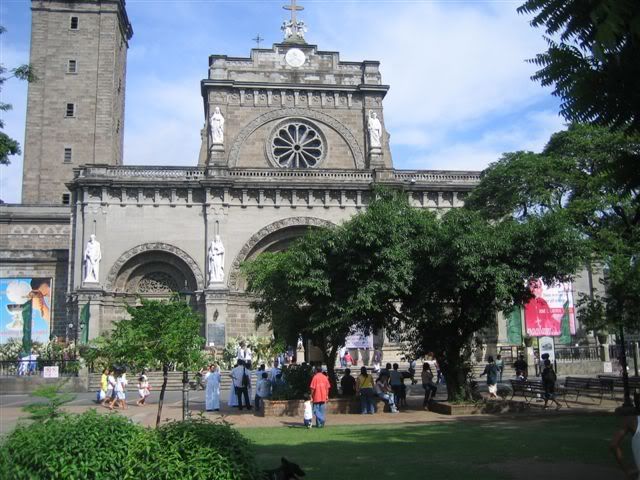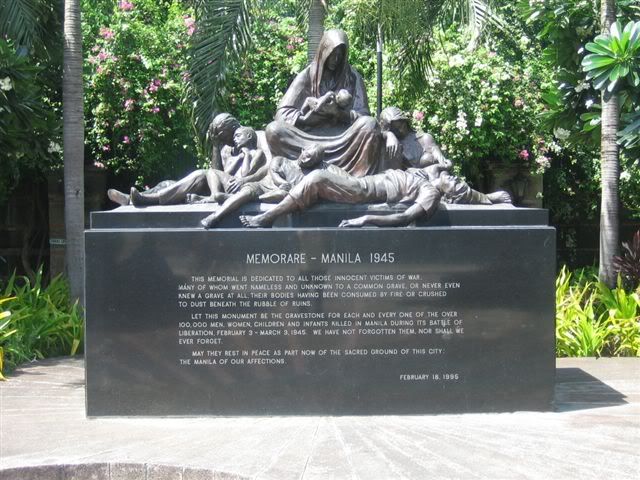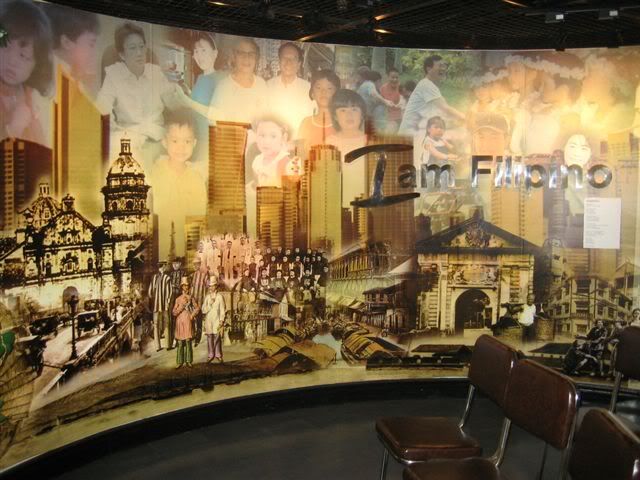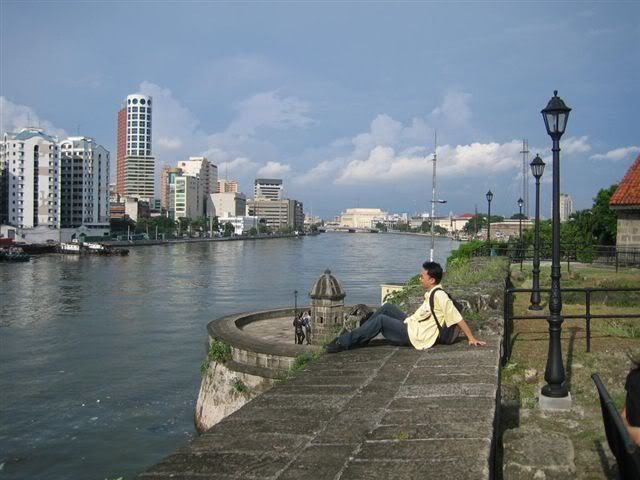Writing on writing
Writing is a mistreated, because misunderstood, craft.
In my job as a part-time writer-and aspiring to be a good one, it’s often frustrating to find that I constantly need to explain myself to other people, to those who don’t understand my work. I mean, explaining certain aspects of my life to practically every significant person around me. This is the lonely part of writing: nobody truly understands and so nobody cares, except for a few who appreciate the rigorous nature of the job.
As to the act of writing itself -- well, that's the enjoyable part, the most fulfilling part; I live my life to the full when I write. A writer's expression of love is naturally through writing -- and living, to a writer, inevitably means writing and even more writing. What’s frustrating for me is that no one really understands me or my work. Hardly anyone understands that writing, no matter how I consider it and even dismiss it as a part-time job, is actually my full-time job. No one else but me understands that it’s my real job, nay, my real life; it’s practically who I am. Because of my writing, or what passes for it anyway, I need to keep abreast of the news, I need to be cognizant of trends, I need to be very observant, I need to take notes (actual and mental), I can’t allow myself to get depressed (depression often kills creativity), I need to experience the world in all its 'manifold splendor.'
Being wrongly judged for it is nonetheless a job hazard. It is a job hazard with no hazard pay. I need to explain that writing, or the mere act of scribbing notes and marginalia, is work. I need to explain that watching a movie or a play is part of the job. I need to explain that buying books and magazines are necessary investments. I need to make it clear that even resting can be a job -- it can be a good 'material' itself. Besides, it’s during lulls and moments of silence that I achieve moments of clarity, and clarity is critical to writing. I can’t afford to get confused. I need my breathing space and my moment of silence. It’s so frustrating to want to point out, at all, that these things are proofs of my dedication to my job, which don’t look like work to the outsider because I can’t help but enjoy the work as well. It's what gives me meaning or sense of direction and fulfillment in life. It's what gives me a critical part of my dignity as human being.
I just find it sad that people tend to look at me as lazy, lacking the drive and ambition, because of my 'dedication' to my craft. It makes me automatically a non-boyfriend/husband/lover material to most people.
But I couldn't care less. I can live with that part. What's hard to live with is when I know that, overall, I don’t get the respect I deserve -- and it's not that I am thirsting for the vainglory of it; just a little bit would do, thank you. When I say writers don’t get respected in our society, what I mean is people tend to box you as special in a weird way. You are automatically eyeballed as an oddball. People tend to presume that you're someone who’s not interested in making money (well, often true), just someone who wants to get published and see his or her byline (not true). They don't know that writing is not about getting that high and being desirous of being recognized, which is a nice thing to have and to wish for but a very insecure thing in the long run. It’s great, though, that writers get avenged or 'psychic-ly' compensated when they get that high feeling seeing their bylines and all, but that’s never the point of writing, never what writing is all about. True 'enthusiasts,' from where I’m standing, do not care about fame and money, they just care about their craft and the message they want to convey. The thing is, writers don’t get respected the way, say, an engineer or a doctor or a lawyer or a businessman gets respected. People see writers and others devoted to the other muses as a frivolous bunch, who take very seriously matters that are not to be taken seriously, matters too trifling or too fancy for others to contemplate, much less to comprehend.
Just take a look at how writers in our society get paid and you see the point more clearly. Here, you don't take up writing for the pay. Our society at large treats writing as some kind of a vanity, so getting writers paid for their ‘non-job’ is just icing on the cake. It’s as though you just happened to acquire the craft from out of the blue and, tadaa! you’re... a writer. It’s as though writing were that easy, as though it doesn’t take years and years to learn the skill and develop the discipline and acquire the attitude. Most people just don’t see the 24/7 dedication, the patience needed to arrive at a voice and master the style, rhetorics, tense shifts, agreements, participles, modals, and so on.
In my case, since I wasn’t born to be really precocious with the language (it’s just that I am passionate about language), and writing in English is basically writing in my third language, I needed to exert an extra effort. I needed to make an effort as well for the reason that my educational background is natural science, not the humanities.
It is infuriating to point out (at all) that I am actually a very patient person, analytical and assiduous when it comes to my readings, diligent in my studies whether spur-of-the-moment or as scheduled -- in short, dedicated to my chosen profession.
Yes, writing is a profession and it needs to be validated as such because it can be a very painstaking profession just like the rest, requiring no less than the intricacy of neurosurgery, especially in sub-genres or specialties, not to mention the inventiveness of Merlin, particularly when the writer’s genre involves poetry or marathon-writing for the novel. Writers, especially in this country, are dismissed en masse just like that. They are punished with a pittance of a pay, unemployment, underemployment, and the most minimal of recognition. They are punished with having to do their writing on the side and needing to find a day job and treating that day job as their actual or real job. They are not valued at all, institutionally speaking and economically more so. The tragedy is when some of the best ones are only acknowledged long after they are dead.
To think that we haven’t even tackled the fact that writers are cursed, by virtue of the nature of their profession, with the special sentivitity not just to humanity and aesthetics but to human suffering, cursed with the capacity to be especially repulsed by the darkness that the human soul is capable of causing. It’s only the kindred spirits, fellow writers and artists, who understand the writer’s plight, and expectedly, it’s only they who tend to give the recognition due them. In a certain way, writers are chosen carriers of the cross. In a way, they are burdended souls; some torments may get the better of them that they end up especially tortured for it.
It’s really very hard and very risky to be a writer, no matter how enjoyable, and yet it’s very easy to dismiss writers and everything they do as a frivolity. I realized this truth most especially when I saw a piece I had written get the pleasure of being published, only to be used to wrap some foul-smelling dried fish! I wasn’t even sure if my beloved masterpiece - a flower that arose from the murky depths of untold anguish, now told at last - got the ultimate reward of being read at all.
No one makes me feel affirmed being a writer because, let’s face it, writing - especially the sort that I do or the one that passes for it - doesn’t bring in lots of money, if at all. Writing certainly doesn’t ensure lots of fair-weather friends. (Who needs them anyway?) And this doesn’t bring me lots of relatives, either.
Writing, moreover, is also misjudged not just as a self-absorbed job, but as a selfish one. In a way, it is true, but ultimately, that view cheapens the way a writer conducts him-/herself as a writer. For me, personally, the insult comes like this -- it’s as though everything that I do is with the thought of accumulating knowledge, with the aim of improving my writing, or worse, with the thought of ensuring that I am proven to be intellectually superior to all others at all times. I run the risk of being thought of doing things not because I enjoy doing them, but because they’re another potential topic to talk about competently during socials, if not another potential subject to write about.
What’s the opposite of affirmation? Whatever it is, that’s what I’ve always felt. It's not exactly rejection, but it's certainly not encouragement, either. Writing is a lonely job, you say? I found it’s even lonelier in ways I’ve never imagined. Maybe this is the price to pay for enjoying what I do, but nevertheless, the lack of encouragement and the wrongful regard writers get reduces what they consider as a noble profession into some kind of cheap posturing.
Like I have said earlier, it never occurs to outsiders or to the uninitiated that writing is also very much like being a doctor. It requires the same level of competency and yet people take this fact lightly. Understandably, they don't see the proof because no one sees it readily. But to writers and like-minded souls, no one can ever sneeze at the amount of mental processing the words go through in a writer's mind. Everybody can write - in the sense that doing essay-type answers is a constant school requirement, but not everyone will have the patience, the discipline, and the predilection to pursue it as an art form, or at least a serious craft. And yet how cavalier it is regarded, how high-handed it is dismissed.
Meanwhile, what I can do right now is to get back at the basic injustice of it all and use my writing to bargain with God. "Please, God," I pray, "let me live another day because I've got something to write down." I can make writing literally a scapegoat to live on, or better yet, a mighty good reason for living.





